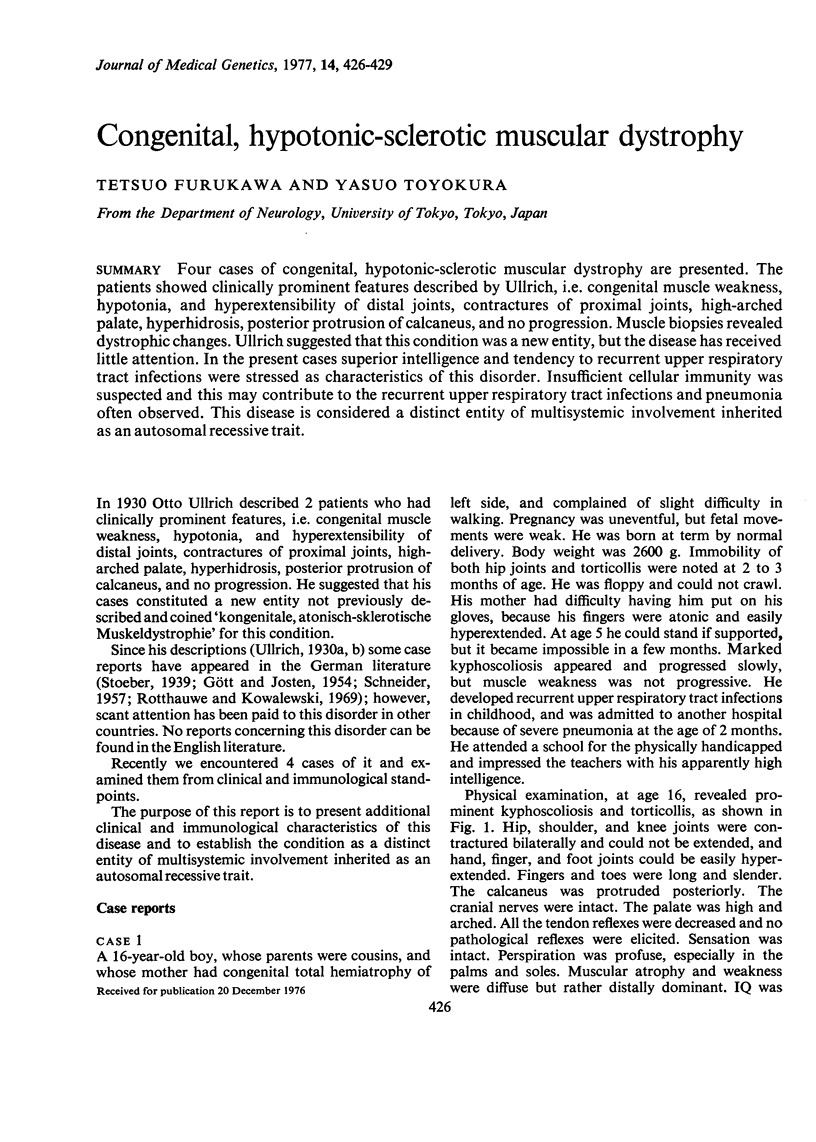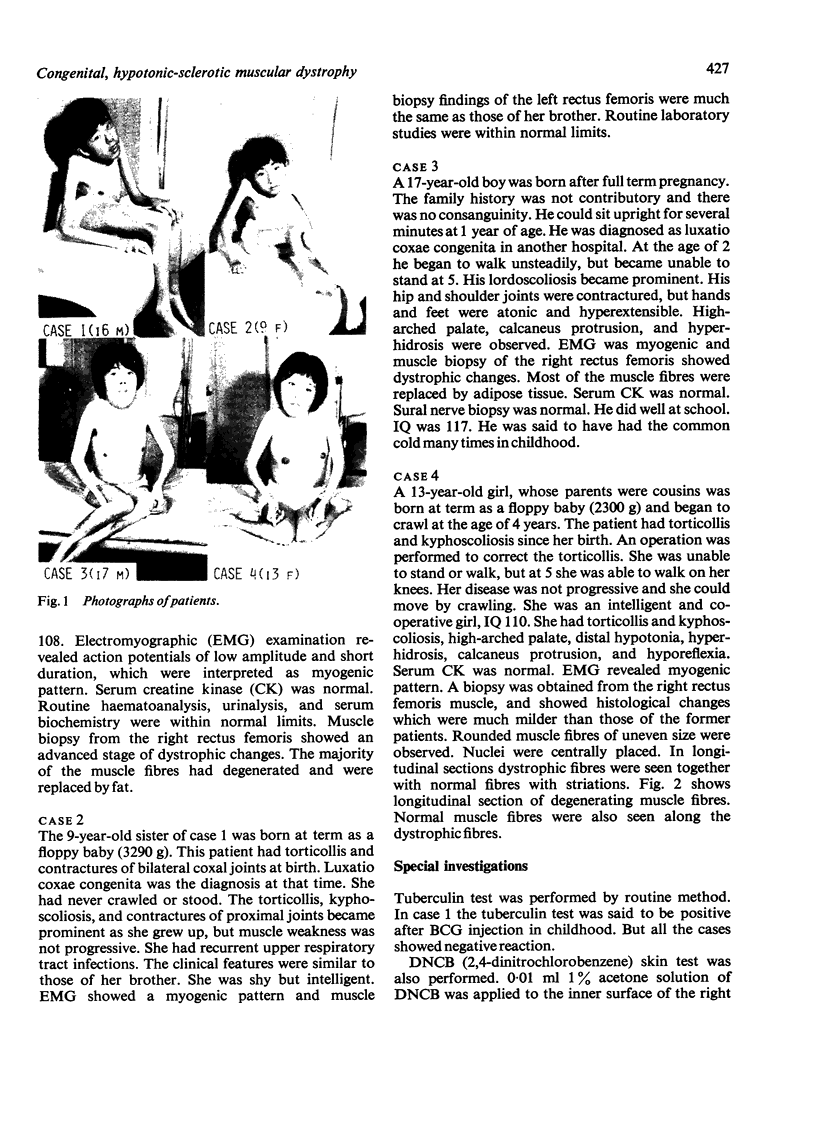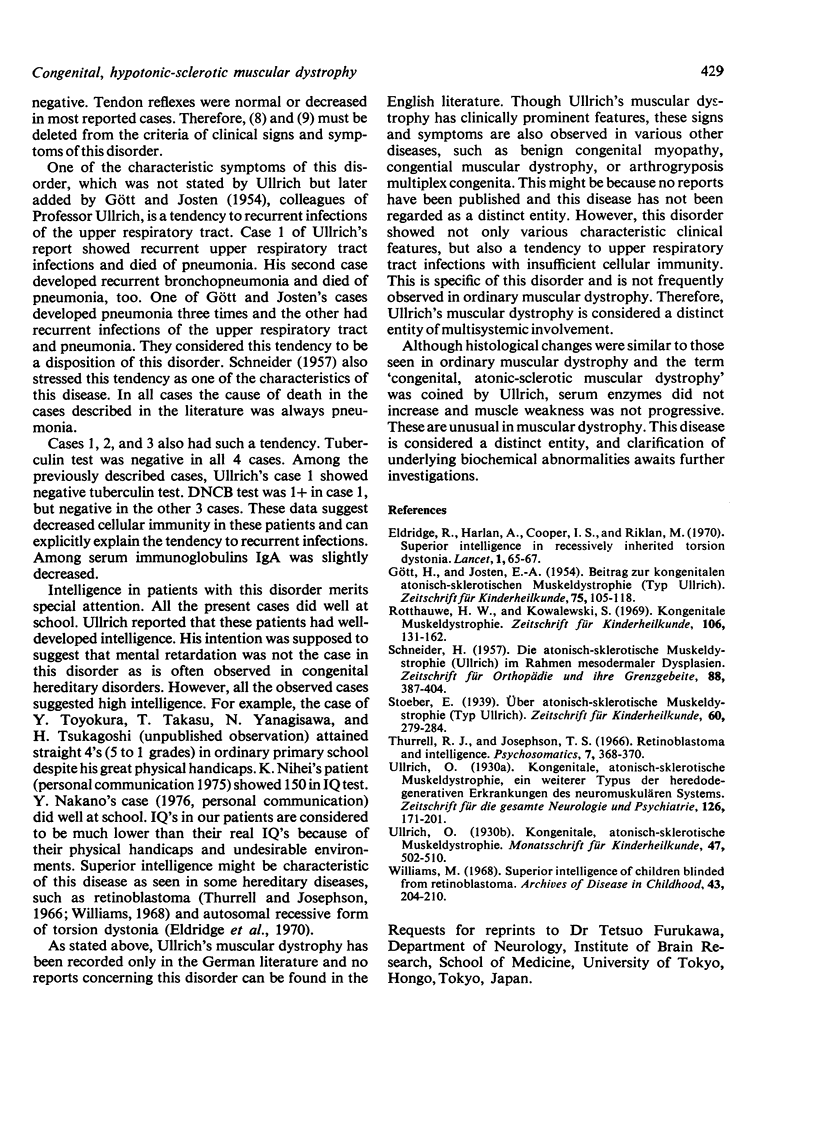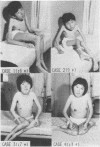Abstract
Four cases of congenital, hypotonic-sclerotic muscular dystrophy are presented. The patients showed clinically prominent features described by Ullrich, i.e. congenital muscle weakness, hypotonia, and hyperextensibility of distal joints, contractures of proximal joints, high-arched palate, hyperhidrosis, posterior protrusion of calcaneus, and no progression. Muscle biopsies revealed dystrophic changes. Ullrich suggested that this condition was a new entity, but the disease has received little attention. In the present cases superior intelligence and tendency to recurrent upper respiratory tract infections were stressed as characteristics of this disorder. Insufficient cellular immunity was suspected and this may contribute to the recurrent upper respiratory tract infections and pneumonia often observed. This disease is considered a distinct entity of multisystemic involvement inherited as an autosomal recessive trait.
Full text
PDF



Images in this article
Selected References
These references are in PubMed. This may not be the complete list of references from this article.
- Eldridge R., Harlan A., Cooper I. S., Riklan M. Superior intelligence in recessively inherited torsion dystonia. Lancet. 1970 Jan 10;1(7637):65–67. doi: 10.1016/s0140-6736(70)91848-9. [DOI] [PubMed] [Google Scholar]
- GOTT H., JOSTEN E. A. Beitrag zur kongenitalen atonisch-sklerotischen Muskeldystrophie, Typ Ullrich. Z Kinderheilkd. 1954;75(2):105–118. [PubMed] [Google Scholar]
- SCHNEIDER H. Die atonisch-sklerotische Muskeldystrophie (Ullrich) im Rahmen mesodermaler Dysplasien. Z Orthop Ihre Grenzgeb. 1957;88(3):397–404. [PubMed] [Google Scholar]
- Thurrell R. J., Josephson T. S. Retinoblastoma and intelligence. Psychosomatics. 1966 Nov-Dec;7(6):368–370. doi: 10.1016/s0033-3182(66)72068-4. [DOI] [PubMed] [Google Scholar]
- Williams M. Superior intelligence of children blinded from retinoblastoma. Arch Dis Child. 1968 Apr;43(228):204–210. doi: 10.1136/adc.43.228.204. [DOI] [PMC free article] [PubMed] [Google Scholar]




